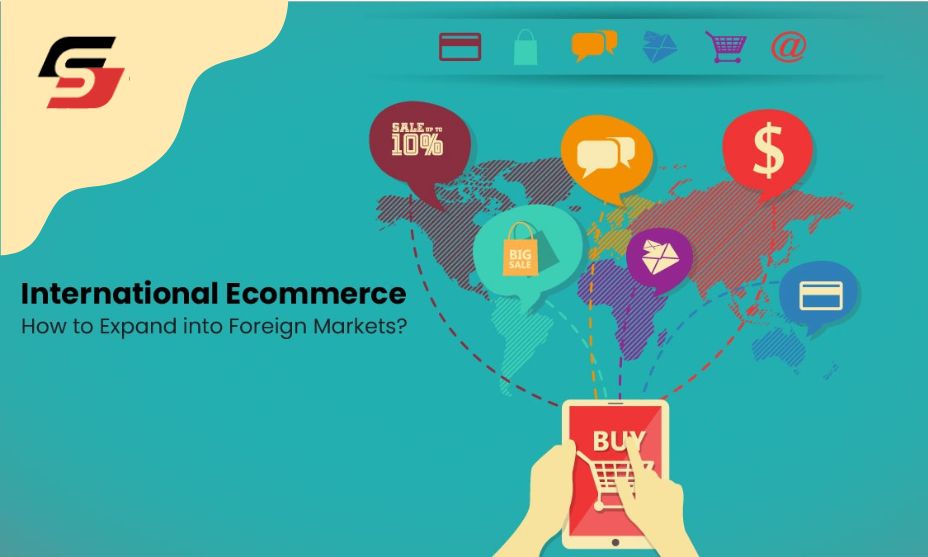Global or international e-commerce is the process of selling products or services to customers in other nations via the Internet beyond geopolitical borders. There are no important restrictions for businesses wishing to sell online, thanks to the numerous e-commerce platforms, marketplaces and digital solutions that make it simpler than ever for companies to go global. The world has become a global market in the age of the Internet, giving firms an exciting chance to grow beyond their local jurisdictions.
This article is intended to help you through the crucial stages of making your growth a glorious reality if you’re a business owner keen to explore overseas markets and take your e-commerce business to the next level.
1 The Attraction of International Markets
Since businesses may now communicate with clients all over the world, thanks to the internet’s wide reach, the way business is done has changed. This opens the door to a large consumer base that is not limited by geography. But entering international markets calls for a well-thought-out strategy, a deep awareness of other cultures and the flexibility to adjust to the particularities of each market. Businesses that successfully explore global markets can gain important advantages, including greater income and global brand awareness. Opening up new international markets may present chances for innovation and adopting new business strategies, ultimately boosting the company’s overall competitiveness.
2 Investigate the Markets You Want
When you decide to grow worldwide research becomes your aim. Identify viable markets based on elements like demand competitiveness and cultural fit. Consider consumer interests and behaviour to adapt your services effectively. Creating a good entrance plan requires doing the necessary foundational research. Understanding demand in diverse markets lets you decide which ones will most likely adopt your products or services. You can find any gaps in the industry that you can utilize by analysing the competition as well. Once you have gathered all of this data You may create a strategic entry plan that aligns with the cultural tastes and expectations of your target markets.
3 Identify Cultural Nuances
Each market has its own culture and style of buying. Adapt your website, product descriptions and marketing messages to reflect the cultural sensibilities and values of your target market. Understanding cultural subtleties is essential for engaging with local audiences. You can gain their trust and create an authentic relationship by changing your strategy to suit their preferences and values. In-depth market research and working with local specialists can also offer priceless insights into the particular cultural subtleties that need to be taken into account in your marketing plan.
Read Also: KEY ELEMENTS FOR CREATING A SUCCESSFUL PRODUCT PAGE
4 Getting Around Legal and Regulatory Challenges
Global expansion requires respect for diverse legal and regulatory systems. These could range from taxation and data protection to import and export rules. Engage legal counsel or consultants to guarantee that your business operations align with all relevant laws. They can advise you on how to tackle the complicated legal and regulatory challenges unique to each country or region where you intend to expand. Keeping up with law and regulation changes is also essential if you want to maintain good behaviour and stay out of trouble with the law.
5 Pick a Reliable E-Commerce Platform
A crucial choice is choosing the best e-commerce platform. Look for platforms that allow worldwide shipping, support several payment channels and provide multilingual assistance. Popular platforms like Shopify and WooCommerce include capabilities that make global expansion easier. Businesses may develop and manage their online stores more easily because of the user-friendly interfaces and configurable templates offered by these platforms. They provide a large selection of plugins and extensions like product control systems and marketing tools that can improve the functionality of the e-commerce website.

6 Accept Payments from Abroad
Customers are happier when transactions go smoothly. Use several payment gateways to account for regional differences. Offering prices in local currencies removes uncertainty and promotes trust among foreign customers. Putting in place safe and dependable fraud detection procedures can assist in safeguarding both the company and its clients from any dangers linked to global payments. In order to ensure that international customers’ concerns are quickly and effectively addressed offering international customer assistance can also improve the entire experience for such customers.
7 Become a Logistics Professional
International e-commerce depends on successful shipping and on-time delivery. Collaborate with reliable transportation companies that focus on international shipments. To manage client expectations, be open and honest about shipping charges and projected delivery timeframes. Ensure that your logistics providers have a great track record of dealing with customs and import/export procedures to avoid any delays or issues. After putting in place a reliable tracking system, you can update clients on the progress of their shipments, thus strengthening their impression of your company.
8 24-hour Customer Service
Due to time zone differences, clients could have inquiries at unusual times. No matter where a customer is situated, a quick response to their inquiries is ensured by providing responsive customer service, perhaps through chatbots. As a result of feeling valued and cared for, customers who receive this degree of support are more likely to be loyal and trustworthy. Offering 24/7 customer service can give companies an advantage over rivals who might not provide the same level of accessibility and assistance.
9 Build Trust
Gaining confidence in international marketplaces is crucial. Showcase trust signals, including client testimonials, security certificates and a transparent returns policy. Making a connection based on trust helps your company reach out to clients abroad. Customers will feel more comfortable connecting with your brand if you build a solid reputation for dependability and openness. Establishing trust and fostering long-lasting connections with overseas clients can be done by providing individualized customer service and prompt answers to questions.
Conclusion
The opportunities for international e-commerce are numerous, but so are the challenges. By completing comprehensive research understanding cultural differences, and embracing adaptability your company may successfully tap into the potential of overseas markets. Remember that each market has its own dynamics, and learning from each experience will be crucial as you continue on your worldwide expansion path. Your company may succeed in the international e-commerce market with tenacity and careful strategy.

